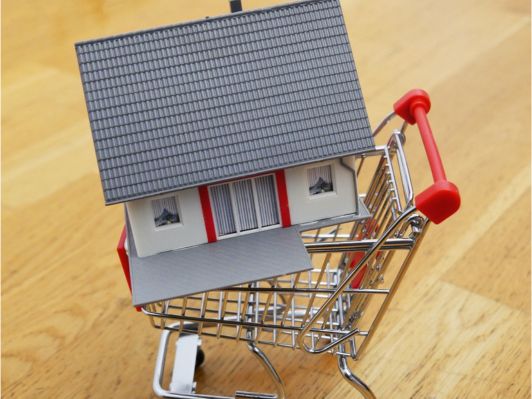In November 2024, the average house price hit a record high of nearly £300,000 after a 1.3% rise that month. With housing prices constantly increasing, many first-time buyers struggle to get on the property ladder.
If you’re planning to buy your first home, saving for a deposit should be a top priority. Mortgage and loan options are available, but you’ll still need a large deposit upfront.
If your savings are low, reaching that goal may feel out of reach. This guide will help you determine how much you need and how to save faster.
Table of Contents
How much do you need to save for a house deposit?

The amount you need to save for a house deposit can vary depending on several factors. This includes the purchase price of the property, and the percentage required for a down payment. As well as any additional costs involved in the home-buying process.
Here are some key points to consider:
1. Deposit percentage
The general guideline in the UK is to aim for a minimum deposit of 5% to 20% of the purchase price. It’s important to note that you may get a better mortgage deal if you pay a 20% mortgage deposit. Rather than paying a 10% deposit.
2. Lender requirements
Lenders have specific criteria to determine the minimum deposit. Some lenders may offer mortgage products with a 95% loan-to-value ratio. This means you would need a deposit of 5% of the property’s value. However, keep in mind that higher deposits can lead to more favourable interest rates and loan terms.
3. Property purchase price
The cost of the property you wish to buy plays a significant role in determining the deposit amount. For example, if you’re looking to purchase a property valued at £300,000 and aim for a 10% deposit, you would need to save £30,000.
4. Additional costs
In addition to the deposit, you should also consider other costs involved in the home-buying process. These may include solicitor fees and survey fees. There is also stamp duty land tax (SDLT) for properties over a certain threshold and moving expenses. Factoring in these additional costs is essential when calculating your savings goal.
To get a better idea of how much deposit you need, talk to a mortgage provider or financial advisor. They can give you advice that fits your money situation and the area where you want to buy.
Now let’s understand how to save money to buy a house by using these simple tips.
How to save for a house deposit
Home ownership requires a strategic approach to your finances. After setting your savings target, start taking actionable steps to save that amount by the end of 2025. By following a few key steps to saving money, you’ll be on your way to buying your own place.
1. Keep your expenses in check
Look for ways to reduce your everyday spending. Track and review your expenses for a month and find gaps where money can be saved.
Divide your expenses into two categories- ‘needs’ and ‘wants’. This will give you an idea of how much you can save each month. If your living costs are getting in the way of your first property, consider downsizing your living arrangements. Consider a more affordable rental or shared house.
Look for opportunities to save on utilities, groceries, transportation, and entertainment. Small changes, like cooking at home instead of eating out or using public transportation instead of owning a car, can help you reach your savings goal faster.
2. Save on rent
Finding a way to reduce your rent can help you in increasing your monthly savings significantly. Consider moving into a smaller place for a few months to save on rent. If you have an extra bedroom, then you can even look for a housemate and earn via rent.
3. Automate your savings
Use the ‘save first spend later’ tactic to ensure that you save consistently. Open a different savings account to store the money saved. You can set up a direct deposit to your new savings account to save for a deposit automatically.
This can be of great help to those who get fixed salaries and want to deposit savings directly into a separate account.
4. Establish an emergency fund
Before focusing solely on saving for a house, it’s essential to build an emergency fund. This can sit in a savings account. This fund should cover 3 to 6 months’ worth of living expenses. Having this safety net will protect you from unexpected financial setbacks and allow you to continue saving for your house without disruption.
How to save money for a house deposit on a low income
Saving for a deposit can be a challenge for those earning a low income. However, with proper budgeting and financial planning, you can create a savings plan that will help you buy property.
1. Get a second source of income
If you’re not earning enough from your job or business, look for ways to create another income source. Think about your transferable skills like writing, digital marketing, accounting, or painting and how they can help you make more money.
You can also consider online tutoring, freelancing, or selling products.
2. Ask your family or friends for help
It might not be easy to ask, but if you feel comfortable, you could ask your loved ones if they have extra money to help you. They may be able to loan you the amount at nominal interest rates or without interest rates.
However, make sure you have a plan to pay the money back eventually. Read our guide on lending money to friends and family.
3. Reduce debt
Before saving money for a big purchase, always have a plan to pay off your debt early. Paying your debts like credit card bills, short term loans, quick loans, cash loans, etc. early can save money on interest and give you a chance to save more money.
Focus on clearing your debts systematically, starting with the ones with the highest interest rates. Once you’ve paid off a debt, allocate the money that was going towards the monthly payments to your house savings.
4. Sell unwanted items
Start saving by decluttering your living space and selling items you no longer need. Online platforms or yard sales can provide an opportunity to turn unused belongings into extra cash for your house savings.
If you are spending money on things you don’t need, try our guide on how to stop spending money on unnecessary things.
Where should you keep the money saved for house deposit?
Now that we’ve covered how you can save for a house deposit, it’s time to think about where you should keep the money saved. Here are some options.
Instant access savings account
Instant access savings accounts allow you to withdraw money from them at any time. It’s easy to open these savings accounts with nominal deposits as low as £1. This regular savings account might also pay you interest on the funds parked in them.
Lifetime individual savings accounts (ISA)
You can consider a Lifetime ISA account to park the funds saved for a mortgage deposit. First-time buyers under the age of 40 are eligible to open this account.
For Lifetime ISAs, the annual contribution limit is £4,000. However, with a Lifetime ISA, if you withdraw funds for any reason other than purchasing a first home or reaching the age of 60, you are subject to a penalty of 25% on the amount withdrawn.
Cash individual savings account (ISA)
A Cash ISA, also known as a Cash Individual Savings Account, is a type of savings account available in the United Kingdom that allows individuals to save money tax-free.
If you don’t use your annual Cash ISA allowance within a tax year, you lose the opportunity to carry it forward. Cash ISAs generally offer more flexibility, allowing you to withdraw funds without penalties, depending on the account terms.
Consider house saving schemes to save money for a bigger deposit

Beyond the house saving tips mentioned above, you can look for various house saving schemes provided by the Government and lenders.
Here are a few options that you can consider.
1. Mortgage guarantee scheme
The new Mortgage Guarantee Scheme is a government-backed initiative designed to help first-time buyers and existing homeowners secure a mortgage with a small deposit. By making the scheme permanent and comprehensive, the government aims to give lenders long-term confidence to continue offering low-deposit mortgages.
Under this scheme, the government guarantees a portion of the loan—typically up to 95% of the property’s value, reducing the risk for lenders. This allows banks and building societies to offer more mortgage options to borrowers who might otherwise struggle to secure financing, helping more people take their first step onto the property ladder.
2. Shared Ownership
Shared ownership offers a more affordable way for people to get a foot on the property ladder and build equity over time. It provides an opportunity for those who may not be able to pay the full mortgage to own a home and gradually increase their share in the property.
Under the scheme, you have the opportunity to purchase a share typically between 25% and 75% of the market value. You would then pay a mortgage on the share you own while paying rent to the housing association or developer on the remaining share.
Conclusion
With real estate getting costlier every year, the sooner you start saving for your own home, the better. Saving a large chunk of money can seem daunting, but it can be achieved with budgeting and financial discipline.
Put these house-saving tips into practice and you’ll soon achieve your goals.
Even if you have a low income, you can save enough for a deposit by making a few sacrifices. Good financial habits can help you become part of the first-time buyer’s club!
FAQs
Is it possible to get a 0-deposit mortgage?
Getting a zero-deposit mortgage is rare, but not impossible. Some lenders might offer mortgages at 100% loan-to-value (LTV). These might be guarantor mortgages, or they may have higher interest rates. That said, you should not opt for them without proper research about the lender.
Is it possible to get a mortgage with a 5% deposit?
Generally, it’s difficult to get a mortgage or a home loan with a deposit under 20% but some lenders do offer mortgages for deposits as low as 5% of the property prices. These loans are offered at higher interest rates to compensate the risk for the lender.
Is 50% a good house deposit?
With a 50% deposit you’ll get the best terms and conditions along with a low interest rate as you will be considered as low risk for lenders.
Can I invest money saved for a mortgage deposit?
Yes, it’s possible to invest the money saved for a mortgage deposit. But this option comes with the risk of the investment losing its value. If the value of the investment declines, you may end up losing the money you saved.
How can I avoid higher interest rates on my mortgage payments?
To avoid paying a higher interest, aim at saving for a mortgage deposit between 10% and 20% of the property value. If you can pay more than 20%, you might be able to get highly favourable interest rates and loans of higher amounts.
Disclaimer: We are not providing financial advice. These are just tips for informational purposes.

